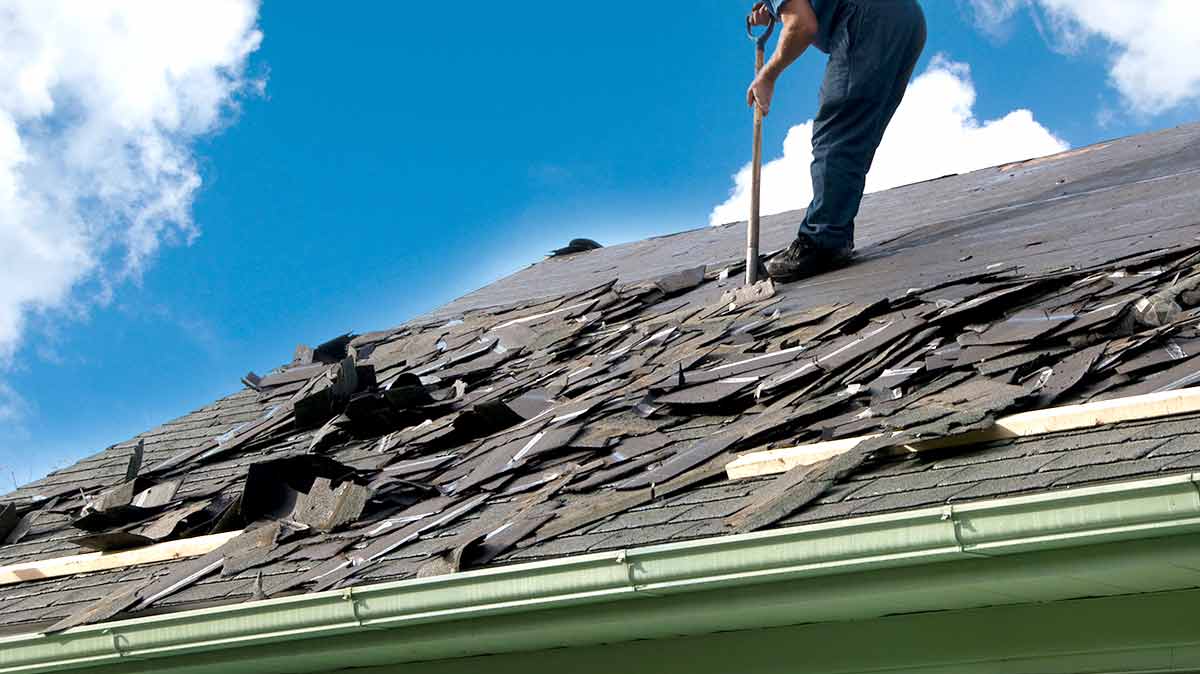A Detailed Summary of Roof Replacement Options: Evaluating the very best Roof Materials for Your Environment and Budget Plan
When considering a roofing system substitute, understanding the interplay between environment conditions and product choice is important. Each roof covering option, from cost-effective asphalt tiles to resistant steel and traditional clay tiles, presents distinct benefits and obstacles.
Recognizing Climate Influence
Comprehending the environment influence on roof substitute is critical for homeowners considering this substantial investment. Different climatic problems can substantially affect both the performance and durability of roof covering products. As an example, locations with severe temperatures may require roof that supply exceptional insulation buildings to manage interior temperature levels properly. In areas vulnerable to hefty rainfall, selecting materials with enhanced waterproofing capacities is necessary to avoid leaks and water damage.

It is additionally vital to think about the environmental impact of roofing materials in connection with neighborhood climate. Lasting options that show heat can assist minimize urban warm island effects, while energy-efficient materials can add to lower energy intake. By recognizing these climate elements, homeowners can make educated choices that straighten with their details environmental conditions, ultimately enhancing the strength and effectiveness of their roofing investments.
Popular Roof Covering Materials
Selecting the best roof covering material is crucial for guaranteeing durability, appearances, and power performance in a home. Different roofing materials are popular among homeowners, each offering special benefits suited to building styles and different environments.
Asphalt tiles are among the most commonly used alternatives due to their cost, simplicity of installation, and adaptability. Metal roofing, consisting of light weight aluminum and steel, is extremely sturdy and can withstand severe weather problems, making it ideal for locations vulnerable to extreme climates.
Clay and concrete ceramic tiles are preferred for their longevity and distinctive appearance, frequently seen in Mediterranean and Southwestern design. They offer superb insulation however can be larger, calling for reinforced frameworks. Slate roofing is an additional costs selection known for its amazing durability and natural charm, though it demands a greater upfront financial investment and knowledgeable installment.
Cost Comparison of Choices
When thinking about a roofing replacement, the monetary implications of various products play an essential role in the decision-making procedure. The prices linked with roofing materials can differ considerably, affected by aspects such as material kind, setup complexity, and local prices variants.
Asphalt tiles, known for their price, normally range from $90 to $100 per square (100 square feet), making them a cost-effective selection for budget-conscious house owners (Roofer Coffs Harbour). Alternatively, metal roofing, while more resilient, can cost between $150 to $300 per square, depending on the sort of metal made use of and the intricacy of the installment
For those seeking visual allure and longevity, choices like clay or concrete floor tiles can vary from $300 to $1,000 per square, mirroring their costs prices. Additionally, slate roof can reach upwards of $800 to $1,500 per square, making it one of the most costly materials readily available.
Inevitably, when examining roof covering alternatives, it is vital to stabilize ahead of time prices with the prospective long-lasting advantages and power cost savings. A detailed expense analysis will make sure house owners make informed choices that straighten with their economic capacities and roof check that needs.
Longevity and Upkeep
The durability and maintenance needs of roofing materials are crucial variables that can substantially affect a property owner's general investment. Various roofing choices show varying life-spans and upkeep needs, which can impact long-term costs and performance.

Clay and concrete ceramic tiles use impressive longevity, frequently exceeding 50 years, yet they can be fragile and require careful upkeep to stay clear of cracking. Wood shingles and shakes can last around 30 years however are vulnerable to rot and bug damages, requiring cautious upkeep to preserve their integrity.
Ultimately, the option of roof covering product ought to align not only with budgetary constraints however likewise with the preferred longevity and upkeep level. Comprehending these variables can assist house owners make informed choices that secure their investment and guarantee the roof continues to be practical and cosmetically pleasing throughout its life-span.
Making Your Decision

Next, review the life-span and guarantee connected with each material. Some products might have a higher upfront cost but deal better longevity and lower maintenance demands, eventually conserving you money with time. It's vital to think about the trade-offs between preliminary financial investment and long-lasting efficiency.
Spending plan constraints must additionally direct your choice. Allot funds not just for the roof materials but also for installment, which can differ based upon intricacy and labor prices. Acquire several quotes from trusted specialists web to guarantee a fair analysis of setup costs.
Lastly, think about the visual appeal and exactly how it straightens with your home's general design. A their explanation well-chosen roof improves visual allure and can increase building worth - Coffs Harbour Roof Replacements. Evaluate these elements very carefully to make an educated decision that satisfies both your useful requirements and financial capabilities
Verdict
In conclusion, picking the proper roofing material calls for cautious consideration of local environment, budget restrictions, and the special buildings of various products. Asphalt shingles supply price, while steel roof covering provides outstanding toughness, and clay tiles ensure durability. A detailed assessment of upfront expenses, long-lasting efficiency, and maintenance demands will certainly facilitate educated decision-making. Eventually, an appropriate roof covering option boosts both the resilience and value of a residential or commercial property, making certain a sound financial investment for the future.
Various climatic problems can dramatically influence both the efficiency and longevity of roofing materials.It is additionally important to consider the ecological effect of roof products in relationship to regional climate. Begin by assessing your local environment, as this substantially influences the performance of roofing materials. Assign funds not just for the roof covering materials yet likewise for installment, which can vary based on intricacy and labor prices.In final thought, selecting the proper roof covering material requires mindful factor to consider of regional environment, budget restraints, and the distinct homes of numerous products.